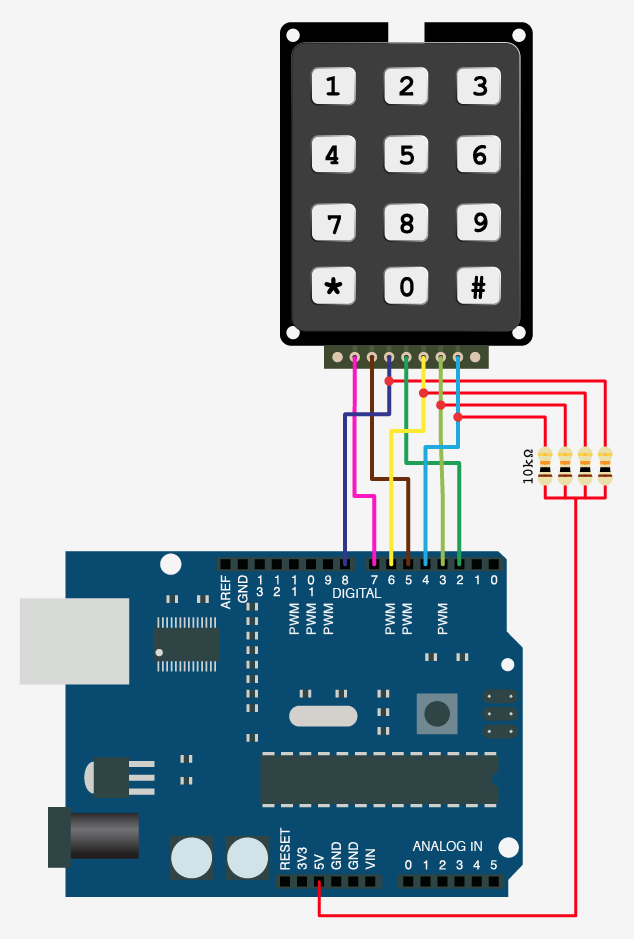
Make a note of when a button completes the circuit, then move onto the next pin. Start by placing one probe on pin 1, the other probe on pin 2, and press the keys one by one. This can be done using the continuity function of a multimeter (the buzzer). The data sheet is important as it will tell you which pins or connectors on the keypad are for the rows and columns. If you don’t have the data sheet – you will need to manually determine which contacts are for the rows and columns. No matter where you get your keypads from, make sure you can get the data sheet – as this will make life easier when wiring them up.

We’ll run through connecting them, using the Arduino library and then finish with a useful example sketch.

Or if you need a lot of buttons, they can save you a lot of time with regards to construction. Numeric keypads can provide a simple end-user alternative for various interfaces for your projects.


 0 kommentar(er)
0 kommentar(er)
